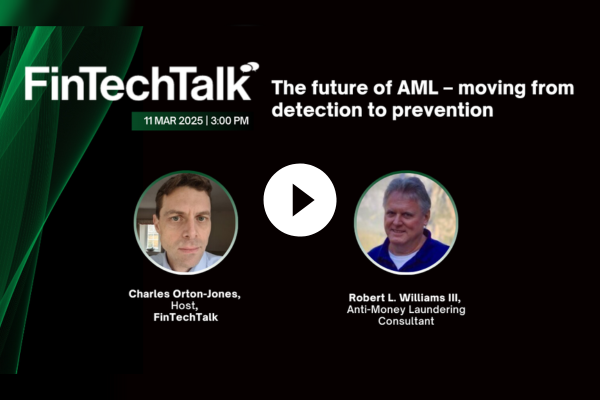Harnessing digital to drive ESG differentiation

Sophie Graham at IFS explores the ways that ESG initiatives are starting to leverage digital transformation
Driven by a growing understanding of its links to financial materiality, environmental social and governance (ESG) has shot up the business agenda in recent years.
Organisations increasingly appreciate that if they want to attract investors, they need to have a strong ESG strategy in place. Investors know that ESG performance is associated with lower risk, higher returns and long-term business sustainability.
During the pandemic, ESG-focused funds and companies outperformed peers (S&P), with factors such as better supplier management and employee engagement paying off. For example, S&P Global Market Intelligence found that from March 5, 2020 to March 5, 2021, 19 ESG exchange-traded funds performed better than the S&P 500.
At the current growth rate, ESG-mandated assets will represent half of all assets under management by 2024 (Deloitte).
The rapid uptick in ESG investing, and the claims made by organisations about their sustainability efforts has launched a wave of ESG regulation, as legislators focus on developing common standards. Much is directed at helping investors and financial market participants understand what is ‘green’ and what is not.
This means delivering consistency and comparability through mandatory reporting and audit, in a landscape that has so far been dominated by a ‘patchwork quilt’ of overlapping voluntary standards. The incoming EU Sustainability Reporting Standards for example, is set to introduce over 1,000 ESG data points to report and audit.
Time is the enemy in this scenario. The pace of change reflects the urgency of action on topics such as climate change, with standard practices developing in real time as companies confront escalating demands for ESG disclosure.
Building the opportunity
The good news is that ESG data is already beginning to leverage digitalisation. By its very nature, ESG sits across the entire business, and has to bring together disparate data managed by different functions. The growing focus on value chain inclusion also means connecting to external sources, like supplier sustainability data.
Once organisations appreciate what data they need and where this is located, they can:
- Connect and automate data collation and analysis, from existing sources like human capital management (HCM), centralising disparate datasets
- Map against common ESG standards, frameworks and regulations
- Manage and analyse datasets to deliver strategic decision-making
One example of how this data can be used to drive a business’ ESG strategy is carbon footprint measurement. Emissions reporting is a top ESG priority. Tracking this not only meets reporting obligations, but also helps prioritise energy reduction strategies and save associated costs.
That’s why the first step towards helping customers with ESG disclosures is typically through emissions calculation tools aimed at helping businesses to manage their climate impact.
Another intersection of ESG and technology is around efficient use of resources. There’s an urgent need for businesses to get smarter about how they use finite resources and raw materials, with both increasing demand and decreasing availability and reliability of supply.
The world’s energy needs are expected to double by 2050. Carbon pricing is surging, with carbon trading seen as a one-way bet. Investors have started to trade in water futures, where demand already outpaces supply. Every year in Europe, €78bn of materials value is lost in the use of steel, plastics and aluminium. Increased competition and pricing of resources will drive out wasteful business models in favour of circular practices.
Digital capabilities are crucial to this. Take Volvo Group Operations & Solutions, whose remanufacturing process focuses on a circular economy through servicing, maintaining and repairing items to increase the utilisation rate of all materials. Servitisation offers the potential to disconnect growth from resource use.
Altering the business model to orientate it around service means long-term contracts, where the company is responsible for design, maintenance, outcome and efficiency for a decade or more. This changes the mindset from ‘take, make, waste’ to one centred around sustainability and incentivises products which can be repaired and reused. This impacts the design, with service models enabling more expensive, longer-lasting designs.
Ensuring such an approach is commercially viable can also help to scale up adoption of innovative, sustainable technologies.
Technology matters
Technology is already transforming the sustainability landscape, especially for data, disclosure and resource management. Companies can leverage this by considering ESG as part of their business transformation strategy.
Effective use of technology is the only way to keep pace with change, especially for data management and disclosures, where simplification and automation will be critically important. The frontrunners and early adopters will take it forward a few stages by identifying how their business model can evolve to be more sustainable through use of technology like servitisation and remanufacturing.
Ultimately, like all transformation, impactful change must be led from the top and aligned closely to business priorities.
Sophie Graham is Global Sustainability (ESG) Director at IFS
Main image courtesy of iStockPhoto.com

Business Reporter Team
Most Viewed
Winston House, 3rd Floor, Units 306-309, 2-4 Dollis Park, London, N3 1HF
23-29 Hendon Lane, London, N3 1RT
020 8349 4363
© 2025, Lyonsdown Limited. Business Reporter® is a registered trademark of Lyonsdown Ltd. VAT registration number: 830519543





